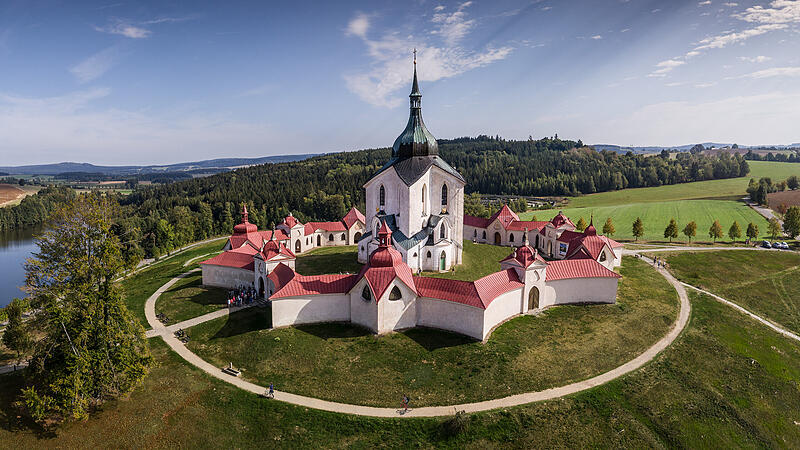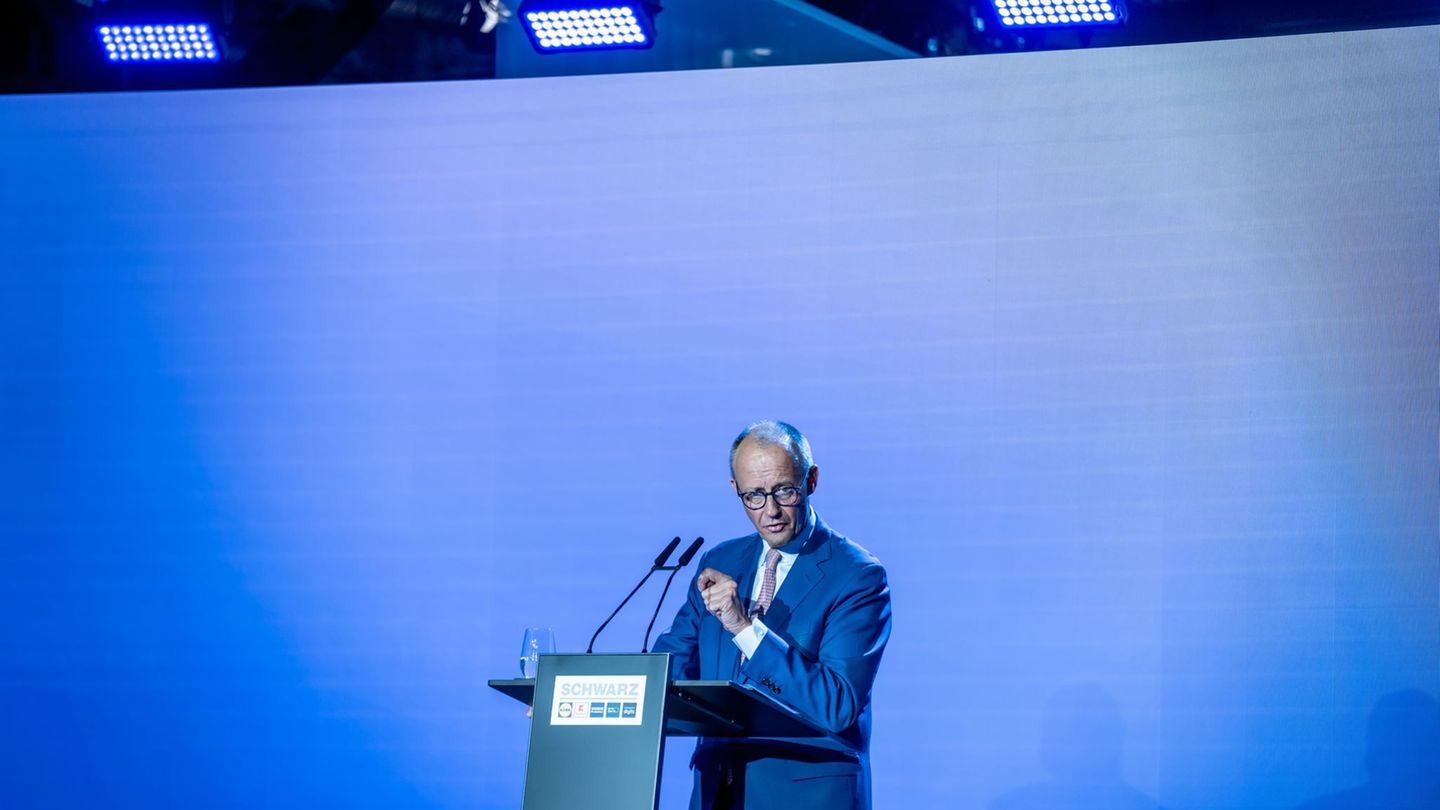Havlickuv Brod with its 25,000 inhabitants is a small town in the Vysocina, the Bohemian-Moravian Heights. Its main square exudes old Austrian flair, you can imagine it as the backdrop for the district captain von Trotta, who in Joseph Roth’s novel “Radetzkymarsch” steps out onto his balcony every Sunday to greet the military band after a midday meal of “wine, beef and cherry dumplings “. “She was the home of the summer,” is what they say of this literary province, and that could be on Havlickuv Brod apply, whose well-kept historic city center favors such journeys through time, all the more so since city politicians had decided years ago to demolish disruptive prefab buildings.
From the hotel “Zum goldenen Löwen” on the north side of the square you have the most beautiful view of the renovated square of the city center, which visibly benefited from the nearby silver mines in the past. Opposite is the Renaissance town hall with its memento mori, a grim reaper who keeps an overview of flourishing life on the top floor.
Johann Wenzel Stamitz (1717–1757), who as a composer shaped the concert symphony and ultimately became “Court Instrumental Music Director” in Mannheim, comes from this city. And here at the square it is also clear why my quarters are called “Hotel Brixen”. South Tyrol is far away here. Because of that. Karel Havlicek Borovsky, a democrat and journalist from the very beginning, i.e. before 1848, was arrested by the police in his parents’ house in a “night and fog operation” and exiled to Brixen. Havlicek-Borovsky felt himself to be an Austro-Slav, he was disappointed with tsarism, which he had encountered during stays in Russia. He wanted the Austrian Empire to be federalized on a nationality basis, but he was not a nationalist. But he demanded and was committed to democratic reforms.
Taken over by the communists
That was already too much for the strengthened absolutism of the young Emperor Franz Joseph. Havlickek-Borovsky’s newspapers were discontinued, he himself was to be silenced by moving to Brixen. The choice of the exotic hotel name here has good political reasons. Like many early democrats, Havlicek-Borovsky was co-opted by the communists, who presented him as a bourgeois pioneer of their own ideas.
Vysocina also has – as a UNESCO World Heritage Site – the monument of one of the most popular political saints: the pilgrimage church Zelena Hora/Green Mountain in Zdar on the Sazawa, less than an hour’s drive from Havlickuv Brod. Anyone who drives overland, through undisturbed areas spared from urban sprawl, still accompanied by old avenues of fruit trees, soon realizes that there is a long tradition of growing potatoes here on the granite floors, comparable to the Mühlviertel. The Green Mountain belongs to John of Nepomuk. Or at least as much to the baroque master builder who created this place for him and the pilgrims: Giovanni Santini Aichel. As it is said here, its fantastic overall concept is only revealed to the eye of God: In fact, the sophistication of the system only becomes fully visible in the aerial view, the play with number symbols, with the number five, which is based on five stars in the halo of the saint and corresponds to the five letters of the Latin “tacui” (“I was silent”).
The Jesuits, with their unmistakable sense for the media of their time, made John the patron saint of the seal of confession and a popular saint who can be found on every bridge. However, John of Nepomuk was initially a priest and notary, a lawyer for the Archbishop of Prague. And as such he opposed the cronyism of King Wenzel IV, who wanted to fill a newly created diocese with a favourite. This opposition was his undoing, the king committed a judicial murder on him in 1393. The Jesuits instead focused on his role as the Queen’s confessor, and the legend of the uncorrupted tongue and the rule of silence survives to this day.
The tongue as a symbol
Of course, Santini-Aichel, the Prague artist of Italian origin, consequently cultivated it. One encounters the tongue as an almost surreal symbol throughout the building, which art historians believe anticipates Cubism. It is the most important example of Baroque Gothic, a stylistic variant that only exists in Bohemia, the conceptual basis of which in the times of the Counter-Reformation is the link between the Baroque and the church buildings of the Middle Ages and thus to the unity of the Catholic Church. The Cistercian abbot Wenzel Wejmluva commissioned the pilgrimage church in front of the door of his monastery before the canonization of John.
The monastery itself, which was abolished by Joseph II, now belongs to the Kinsky family again. Constantin Kinsky, a management consultant who grew up in France, manages 5700 hectares of agriculture and 750 hectares of ponds here. He calculates that it takes one hectare of forest to get one square meter of the roof area of the extensive former monastery building. Which becomes a challenge with the bark beetle and climate damage. A new forest law is needed, he wants to build on the idea of the “mixed forest”.
his grandmother Eleonore put into practice in two reservations as early as the 1920s. In terms of sustainability, of course, 50 years have been lost.
Museum of the new generation
“We have always been high-tech,” says Kinsky, alluding to the ancient, sophisticated water management of the Cistercians and their knowledge of soil culture. So he will soon start a photovoltaic pilot project on one of his ponds, cooled, mobile and without soil consumption. And the “museum of the new generation” is actually high-tech, in which he and his wife not only introduce the region, but also the general public to the eventful history.
With an audio guide, also in German, you walk in 90 minutes through an exciting and entertainingly interactive “museum” in which station by station across the centuries can be experienced with video mapping and animated graphics, exemplarily supported by original documents and exhibits, history told in the best sense.
A star architect like Giovanni Santini-Aichel was recommended in his time. There are a number of testimonies of his work that are well worth seeing in the vicinity. That Premonstratensian Monastery of Zeliv belongs to it. His virtuoso play with symmetry can be seen here on the two choir organ buildings. Zeliv meets us as a contrasting place. In order to gain a foothold again economically, the order set up a dignified hotel with a spa and wellness resort in the former baroque abbey, provided with good food and the monastery’s own brewery, a kind of small start-up, in which the nearby private brewery Bernard provided midwifery .
A large ceiling painting by the Art Nouveau painter Anton Häusler depicts all of the Czech national saints – an interesting document of how much the Catholic Church supported the legitimation of Bohemian statehood during the monarchy.
A dark chapter
In the cloister we encounter a chapter beyond glory. A permanent exhibition recalls the dark years when the monastery was a so-called “concentration monastery” between 1948 and 1956, in which hundreds of religious priests were interned. The communist state police not only disposed of the abbey’s valuable library in the nearby paper factory, they also murdered the Premonstratensian Josef Toufar after a show trial. The knowledge of the consequences of a totalitarian regime is present. Props such as the secretly manufactured monstrance made of tin cans are illustrative sacred objects of a persecuted church.
In many of its places, the attractive Vysocina region is reminiscent of both: terrible excesses of power and fruitful cultural symbioses. Such is the artist couple Bohuslav Reynek and Suzanne Renaud. Reynek and his French wife commuted between Grenoble and Petrkov until 1938 and, as translators, created a bridge between young Czechoslovakia and France.
Reynek’s family estate in Petrkov left them after World War II. The idyll, reminiscent of Kubin’s refuge in Zwickledt, became exile in his own country. Correspondence had to replace travel, and the small Renaissance manor house ultimately became a trap for two cosmopolitans and their sons. Although Bohuslav Reynek was not only a great draftsman, but also enthusiastically translated alongside French authors Georg Trakl, there are hardly any translations of his own literature into German. There is a lot to discover here. At least the “Blue Salon” has been preserved, a room with a unique wall painting.
An unworldly time
The Ministry of Culture is working on reviving the place, which was once a center of intellectual and artistic exchange, even during the dissident period. Regardless of the ongoing renovation, the National Literary Museum wants to keep the building open. Monthly events are announced online, family photographs by Daniel Reynek illustrate the fate of parents, which is symptomatic of the withdrawn time of the 1950s.
The poet Jan Skacel aptly formulated the character that characterizes this place and the surrounding landscape: “The Moravian anthem is namely – silence”.
- Tourist Info at linkedin.com/in/jitka-zikmundova/
Source: Nachrichten




